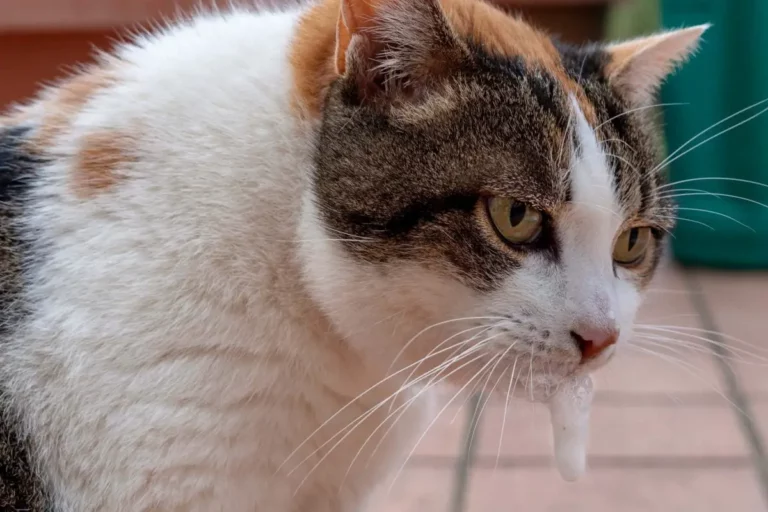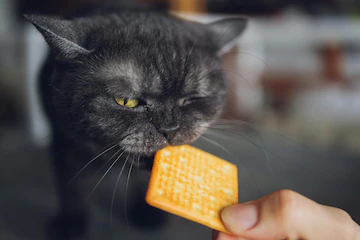Why Do Cats Like Being Slapped on the Bum? 10 Interesting Reasons!
Cats are creatures of mystery, often leaving their human companions puzzled by their behaviors. One such enigmatic behavior is their apparent fondness for being slapped or patted on the bum.
While it might seem odd to us, there are logical and instinctual reasons behind this feline quirk. Let’s delve deep into the world of cats and discover the underlying factors of this behavior.
Key Takeaways:
- Cats have heightened sensitivity around their tail base, making them responsive to slaps or pats.
- This behavior can be linked to instinctual and social factors from their wild ancestors.
- Not all cats enjoy this; always observe your feline’s reaction to ensure they’re comfortable.
Short Answer: Cats often enjoy being slapped or patted on the bum due to a combination of instinctual behaviors, heightened sensitivity in the region, and social factors inherited from their wild counterparts.
10 Reasons Why Cats Like Being Slapped on the Bum
1) Activation of Sensitive Nerve Endings
Cats possess a high concentration of nerve endings near the base of their tail. When this area is slapped or patted, it triggers these sensitive nerve endings, providing a sensation that many cats find pleasurable. It’s similar to how humans might enjoy a gentle back scratch, appealing to our tactile senses.
2) ‘Elevator Butt’ Behavior
You might have noticed your cat raising its tail base when you start petting near their bum – this is often referred to as the ‘elevator butt’ behavior. It’s a sign that your cat is thoroughly enjoying the sensation and trusts you. This action can also be seen as a relaxation signal, indicating that they’re in a comfortable state.
3) Mating Behavior
In the world of felines, a raised tail, especially from a female cat, can be a sign related to mating rituals. The pat or slap on the bum might be reminiscent of certain actions in these rituals.
It’s essential, however, to note that while some behaviors stem from mating instincts, they’ve evolved over time and might not always have a direct connection to reproduction in a domestic setting.
4) Stretching and Flexing
Cats absolutely love stretching. When they’re slapped lightly on the bum, it offers a sensation that encourages them to stretch and flex their back muscles. This, combined with the tactile pleasure, can be a reason they lean into the sensation.
5) Stimulation of Scent Glands
Cats have scent glands located around their face, paws, and the base of their tail. When they raise their tail or lean into a pat, they could be trying to mark their territory using these scent glands. The action of slapping or patting might stimulate these glands, further spreading their unique scent.
6) Release of Endorphins
Physical touch, when enjoyed, can lead to the release of endorphins – the body’s natural feel-good chemicals. A gentle slap or pat on the bum can be just the right amount of pressure to release these chemicals, leading to a pleasurable feeling for the cat.
7) Relief from Itchy Tails
Sometimes, cats might have itchiness near their tailbase due to reasons like fleas or skin conditions. A good pat can provide temporary relief from this itchiness, making the action a welcome one.
8) Bum Pats as Playful Acts
Many cats are playful creatures, and some might interpret a bum pat as a playful act. It might remind them of play-fighting or other playful interactions they have with fellow felines.
9) Conditioned Behavior
Over time, if a cat receives positive reinforcement after a bum slap, such as treats or more affection, they might begin to associate the action with positive outcomes. This learned behavior can make them more receptive to bum slaps in the future.
10) Unique Cat Preferences
Lastly, it’s essential to remember that every cat is unique. Just like humans, they have their individual preferences. While many might love a gentle slap or pat on the bum, others might not appreciate it as much. Always be observant and respect their boundaries.
No products found.
Delving Deeper: The Affinity for Slaps and Pats
Why Cats Like Being Slapped on the Back
The feline back, especially the region near the tail base, is a treasure trove of sensory delight for cats. It’s not just about the nerve endings but also the structure of their anatomy.
The cat’s spine, specifically the lumbar and sacral regions, are areas where cats enjoy being touched or patted. This part of their anatomy is flexible, allowing them to exhibit that characteristic arching behavior during stretching or when they’re feeling particularly playful.
Additionally, the muscles in this area work hard, aiding in their agile movements, jumps, and dashes. Just as humans enjoy a good massage in a muscle-intensive area, cats might enjoy a firm slap or pat on the back for similar reasons.
It provides a sort of “mini-massage,” momentarily relieving muscle tension and offering a tactile pleasure that they can’t achieve on their own.
The General Affinity: Why Do Cats Like Being Slapped?
When we zoom out and look at the broader picture, it’s clear that cats have a general affinity for specific types of physical interactions. Their love for slaps or pats isn’t confined solely to their bums or backs.
Many cats enjoy chin scratches, belly rubs (though tread carefully here, as some cats might see this as an invitation for play-fighting), and gentle head pats.
Physical interaction, be it through gentle strokes, scratches, or firmer pats, provides the sensory stimulation that cats crave. These interactions also serve as bonding moments between the cat and their human. In the wild, cats would often groom each other, a behavior known as allogrooming, which strengthens social bonds.
In a domestic setting, our interactions, including those firm pats, can mimic this bonding behavior. It’s a way for cats to connect, communicate trust, and express contentment.
Understanding Cat Body Language
Cats, much like humans, have a complex language of their own. However, instead of words, they use their bodies to convey messages, feelings, and intentions. Getting a good grasp of feline body language can help you better understand their likes, and dislikes, and even preempt their next move.
Let’s decode some of these silent yet profound cues.
Tail Movements and Positions
A cat’s tail is like a mood barometer. A raised tail typically signifies a confident and happy cat, while a tucked tail might indicate fear or submission. If you notice your cat’s tail lashing or thumping, it can be a sign of irritation or impending aggressive behavior.
On the other hand, a gentle tail flick can signify mild annoyance or playful curiosity.
Ear Orientation
A cat’s ears are highly expressive. Forward-facing ears show interest or excitement. If the ears swivel back or flatten, it’s a sign the cat is frightened, irritated, or on the defensive. Always approach a cat with flattened ears with caution.
Whisker Positions
Whiskers, besides being sensory tools, also play a role in showcasing mood. Forward-facing whiskers indicate curiosity or playfulness, while whiskers pulled back against the face can mean the cat is scared or might act defensively.
Purring and Vocalization
While purring is often associated with contentment, it’s essential to note that cats also purr when they’re in pain or distress. Context is everything. Other vocal cues like hissing or growling are clear indicators of discomfort or threat. On the other hand, meows, chirps, and trills often signal a desire for attention, play, or food.
Body Posture
A relaxed, sprawled-out cat is a content cat. However, a cat that crouches low, with its body tight and eyes wide, is likely feeling threatened or anxious. Recognizing these postures can help you gauge whether it’s a good time for interaction or if it’s best to give your feline friend some space.
Understanding these signals is key to building a harmonious relationship with your cat. It helps ensure that interactions, be it bum slaps, back pats, or gentle strokes, are always welcome and enjoyable for both you and your furry companion.
Safety and Ethical Considerations
While many cats might indeed enjoy a playful slap or pat on their bum or back, it’s essential to approach this behavior with both understanding and caution. Let’s dive into the ethical aspects and safety measures one should keep in mind.
Reading Individual Cat Preferences
Each cat is unique. What one might find pleasurable, another might find distressing. It’s important always to listen to your cat’s body language. If they appear uncomfortable, it’s best to stop immediately. Never force a behavior, even if other cats seem to enjoy it. Your cat’s comfort should always be paramount.
Avoiding Overstimulation
A little pat might be enjoyable, but too much can lead to overstimulation. Cats have a threshold, and when that’s crossed, they can quickly go from playful to agitated. Overstimulation can lead to scratching, biting, and an overall negative association with the act. Always observe for signs that your cat might want the interaction to end.
Recognizing Vulnerable Areas
While the base of the tail can be a sweet spot for many cats, the areas closer to their hind legs and belly are typically more sensitive. Some cats might be protective of these regions due to past traumas or merely personal preference. Always approach with caution and be prepared for a swift change in mood if you venture into these zones.
Ethical Concerns
It’s crucial to remember that cats are not toys. Their reactions and emotions are valid. Engaging in any behavior, like bum slaps, solely for human amusement without considering the cat’s comfort is ethically questionable. Their well-being, both physical and emotional, should always be the top priority.
When to Seek Professional Guidance
If you notice that your cat has an unusual fixation with being slapped or if they seem to have a negative reaction to touch in general, it might be a good idea to consult with a veterinarian or a pet behaviorist. They can provide insights into any underlying issues or offer guidance on promoting positive interactions.
While many cats might revel in a well-timed bum pat, it’s always vital to be guided by empathy, understanding, and respect. Every interaction should be rooted in love and the intent to enhance the bond you share with your feline friend.
Alternatives to Bum Slapping
Cats, with their myriad personalities and quirks, often have distinct preferences when it comes to interactions and affections.
If you’re looking for alternative ways to bond with your cat or want to diversify the types of interactions you have, consider the following methods that are both engaging and delightful for your feline companion.
Gentle Petting
Gentle strokes, particularly around their cheeks, chin, and the base of their ears, can be incredibly soothing for cats. Many felines adore being caressed in these regions due to the presence of scent glands, allowing them to mark you as their own.
Massage
A gentle massage, especially along the spine, can help relax your cat. Use your fingertips to apply light pressure and move in slow circular motions. Not only can this be relaxing for your cat, but it’s also an opportunity to check for any abnormalities or signs of health concerns.
Feather Teasers and Toys
Engage your cat’s playful side with feather teasers, laser pointers, or interactive toys. These tools can stimulate their hunting instincts, offering both mental and physical exercise. Ensure the play sessions are safe and that your cat gets a “catch” now and then for a satisfying conclusion.
Treats and Food Puzzles
Consider using treat puzzles or toys that dispense kibble. These devices engage your cat’s brain and can be a fun, rewarding experience for them. It’s a fantastic way to challenge their intelligence and dexterity.
Catnip and Scented Toys
Introducing catnip or silver vine toys can be a delightful experience for cats who are sensitive to these herbs. They can roll, rub, and play with them, allowing for a self-guided, pleasurable experience. Remember, not all cats respond to catnip, but for those who do, it can be a treat.
Brushing
Many cats enjoy the sensation of being brushed. Not only does it feel good, but it also helps in reducing hairballs, keeps their coat in good condition, and strengthens your bond. Choose a brush that’s suitable for your cat’s fur type.
Soft Purring or Vocalizations
Softly speaking, purring, or humming can have a calming effect on many cats. Some felines are particularly drawn to their owner’s voice and will often come over for a cuddle or petting session when they hear gentle vocalizations.
In essence, building a strong bond with your cat isn’t limited to just one type of interaction. By diversifying the ways you engage with your feline friend, you’ll both benefit from a richer, more fulfilling relationship.
Conclusion
The feline world is full of intriguing behaviors, and a cat’s affinity for bum slaps or pats is certainly among them. While many cats relish the sensation due to their sensitive nerve endings and the evolutionary behaviors associated with it, it’s vital for cat owners to remember that each feline is a unique individual.
Not every cat will react the same way, and understanding the line between pleasure and discomfort is crucial.
In nurturing our bond with these captivating creatures, understanding, respect, and patience are key. By paying attention to your cat’s body language and preferences, you can create a safe and loving environment where both you and your feline friend can enjoy special moments of affectionate interaction.
Whether it’s a bum pat, a chin scratch, or a gentle massage, finding what your cat loves most will undoubtedly deepen the bond you share.
Additional Resources
For those intrigued by the peculiarities and wonders of feline behavior, there are several resources that can offer deeper insights. Here’s a curated list of books, videos, and online platforms to help you understand your furry friend even better:
- Books
- “The Cat Whisperer: Why Cats Do What They Do – and How to Get Them to Do What You Want” by Mieshelle Nagelschneider. A comprehensive guide to understanding and resolving your cat’s behavioral challenges.
- “Total Cat Mojo: The Ultimate Guide to Life with Your Cat” by Jackson Galaxy. Dive deep into the mind of a cat with insights from a renowned cat behaviorist.
- Websites
- The International Cat Association (TICA): A recognized authority on cat breeds and behaviors.
- Cat Behavior Associates: Led by Pam Johnson-Bennett, this site offers valuable advice on various cat behaviors.
- Videos
- Jackson Galaxy’s YouTube Channel: Featuring a plethora of videos on cat behaviors, challenges, and solutions.
- Forums
- The Cat Site Forums: A community where cat lovers discuss a wide range of topics related to their beloved felines.
Tapping into these resources can empower you to make informed decisions about your cat’s well-being, enhance your relationship, and marvel at the diverse behaviors these enigmatic creatures exhibit.

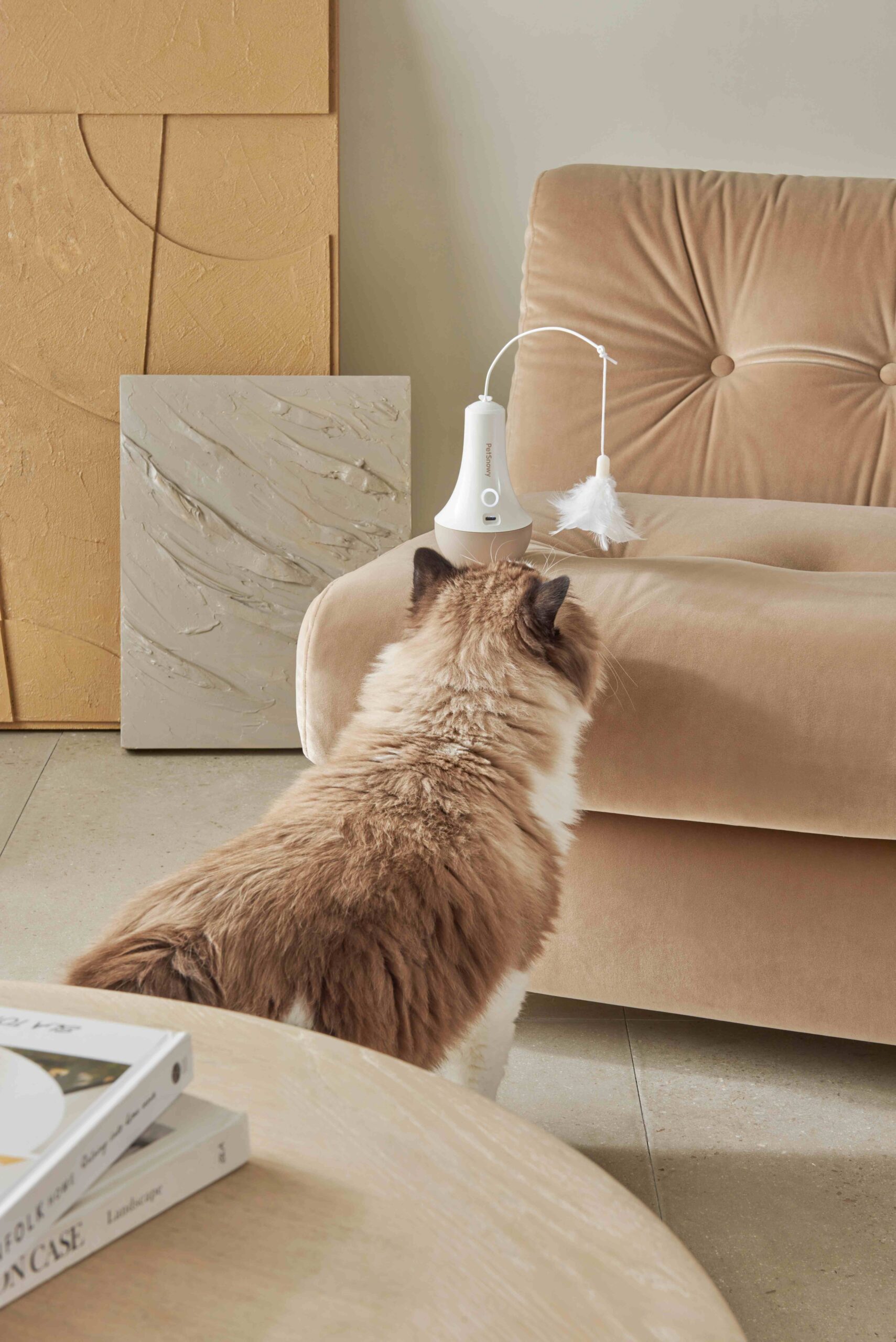
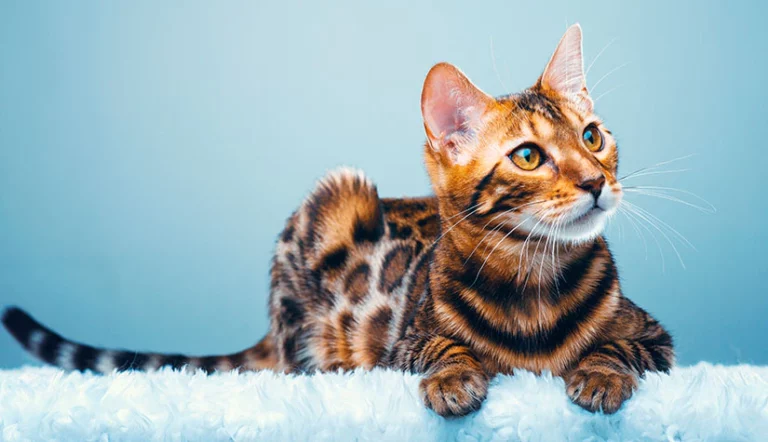
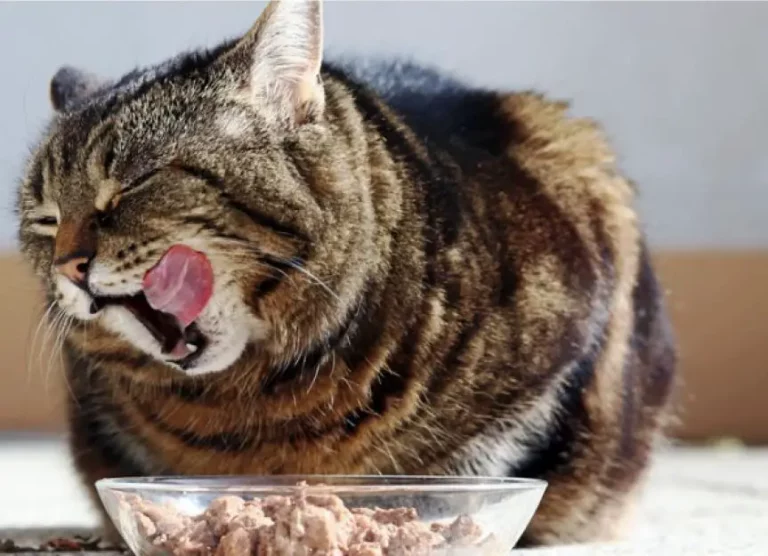
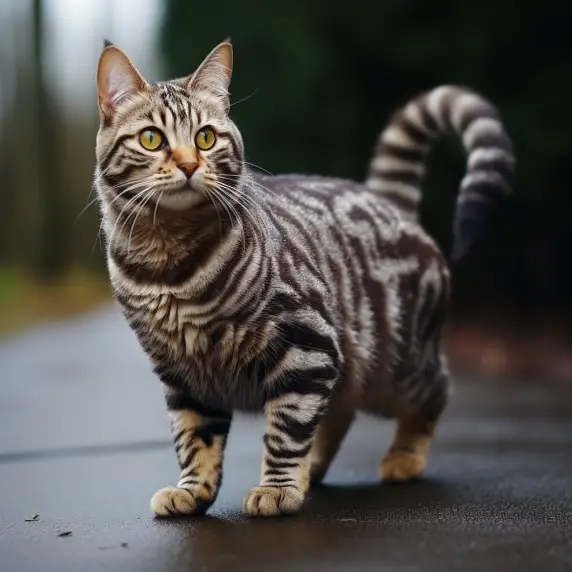
![Why Does My Cat Keep Pooping Outside the Litter Box? [5 Things You Can Do]](https://www.warmlypet.com/wp-content/uploads/2023/01/senior_cat_not_using_litter_box-1024x548-1-768x411.webp)
